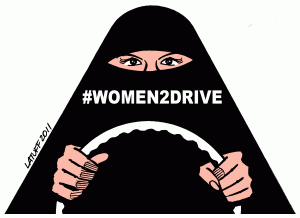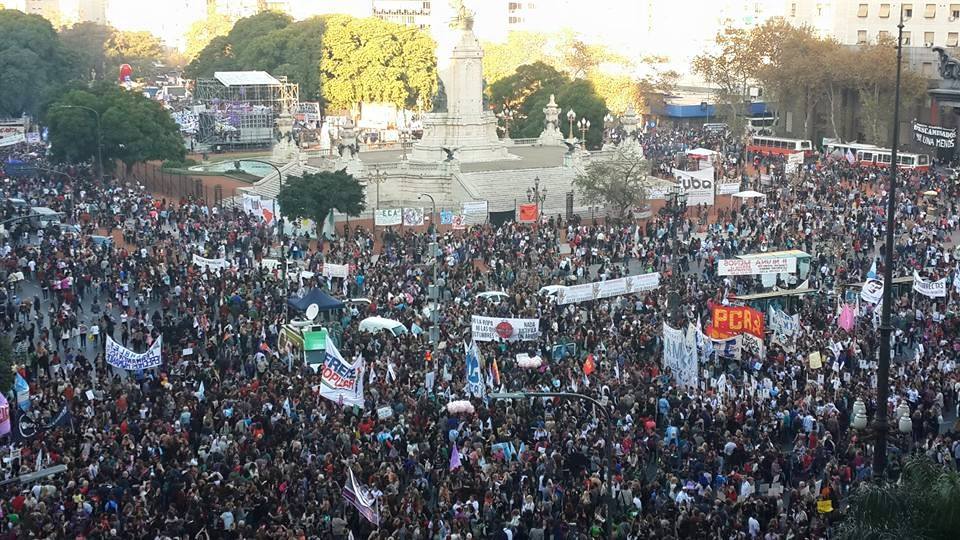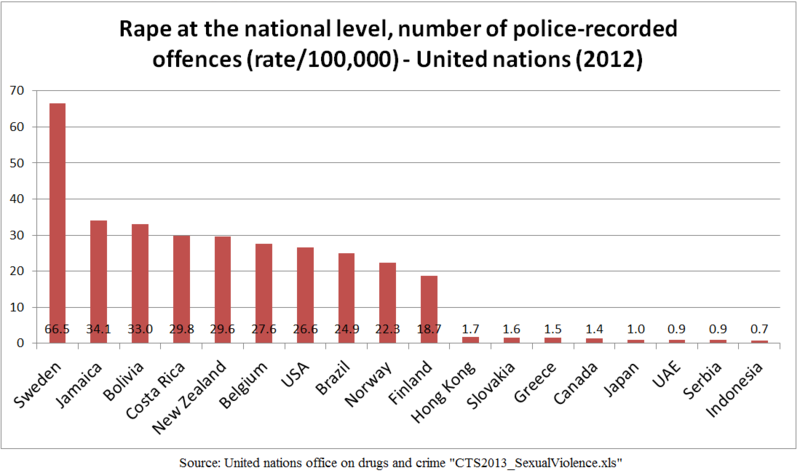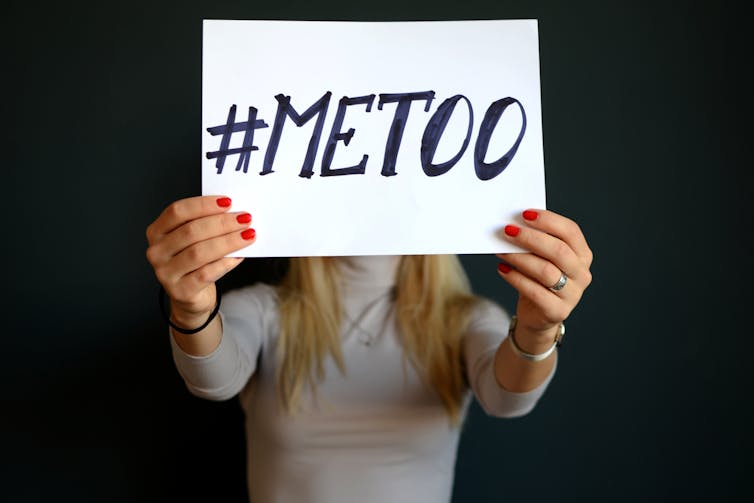16.1: Equity
- Page ID
- 144090
\( \newcommand{\vecs}[1]{\overset { \scriptstyle \rightharpoonup} {\mathbf{#1}} } \)
\( \newcommand{\vecd}[1]{\overset{-\!-\!\rightharpoonup}{\vphantom{a}\smash {#1}}} \)
\( \newcommand{\id}{\mathrm{id}}\) \( \newcommand{\Span}{\mathrm{span}}\)
( \newcommand{\kernel}{\mathrm{null}\,}\) \( \newcommand{\range}{\mathrm{range}\,}\)
\( \newcommand{\RealPart}{\mathrm{Re}}\) \( \newcommand{\ImaginaryPart}{\mathrm{Im}}\)
\( \newcommand{\Argument}{\mathrm{Arg}}\) \( \newcommand{\norm}[1]{\| #1 \|}\)
\( \newcommand{\inner}[2]{\langle #1, #2 \rangle}\)
\( \newcommand{\Span}{\mathrm{span}}\)
\( \newcommand{\id}{\mathrm{id}}\)
\( \newcommand{\Span}{\mathrm{span}}\)
\( \newcommand{\kernel}{\mathrm{null}\,}\)
\( \newcommand{\range}{\mathrm{range}\,}\)
\( \newcommand{\RealPart}{\mathrm{Re}}\)
\( \newcommand{\ImaginaryPart}{\mathrm{Im}}\)
\( \newcommand{\Argument}{\mathrm{Arg}}\)
\( \newcommand{\norm}[1]{\| #1 \|}\)
\( \newcommand{\inner}[2]{\langle #1, #2 \rangle}\)
\( \newcommand{\Span}{\mathrm{span}}\) \( \newcommand{\AA}{\unicode[.8,0]{x212B}}\)
\( \newcommand{\vectorA}[1]{\vec{#1}} % arrow\)
\( \newcommand{\vectorAt}[1]{\vec{\text{#1}}} % arrow\)
\( \newcommand{\vectorB}[1]{\overset { \scriptstyle \rightharpoonup} {\mathbf{#1}} } \)
\( \newcommand{\vectorC}[1]{\textbf{#1}} \)
\( \newcommand{\vectorD}[1]{\overrightarrow{#1}} \)
\( \newcommand{\vectorDt}[1]{\overrightarrow{\text{#1}}} \)
\( \newcommand{\vectE}[1]{\overset{-\!-\!\rightharpoonup}{\vphantom{a}\smash{\mathbf {#1}}}} \)
\( \newcommand{\vecs}[1]{\overset { \scriptstyle \rightharpoonup} {\mathbf{#1}} } \)
\( \newcommand{\vecd}[1]{\overset{-\!-\!\rightharpoonup}{\vphantom{a}\smash {#1}}} \)
This is a special chapter devoted to a selection of activist causes to improve the lives of women. We look closely at two online movements outside of the US, one in each hemisphere. Both integrate the global and the local; both work to liberate women from systematic violence. Then we look at a few movements in the US.
But first let’s briefly broaden our lens to online activism in general.

In the following chapter, we will discuss five strategies evident in creative online activist movements today, including speed, visuals, performances, inclusiveness, and masked leadership. These five strategies can be found in many gender-focused online movements as well. But from my perspective, what is salient – what stands out – about women’s movements are the ways the internet is used to enable public conversation around topics previously kept private. Social media in particular affords , the affordance of social media to draw matters society guards as private into the public sphere.
People who identify as “men” and people who identify as “women” have lived in the same neighborhoods and households across cultures and time periods. This quality makes gender relationships and activism distinct among activist movements. Issues that arise between groups of different ethnicities, races, and classes are often clearly expressed out in the open; but gender issues are not expressed as openly. Because men and women co-exist so closely in every community, issues between people of different gender identities tend to leak out in whispers and remain more hidden.
WOMEN AS A GENDER IDENTITY: A DISCLAIMER
In order to look closely at two important online movements for women, I have had to exclude many other movements, moments, and identities from this chapter. The premise of the chapter admittedly works against complex understandings of gender, by presenting “women” as a fixed identity group. My goal in chapters 5 and 6 is to give you a selection of histories, tools, and examples to help you understand online activist movements.
As the Wikipedia page on gender reflects, a deep understanding of gender and sexuality must also consider where the boundaries between genders come from and what is left unspoken when we rely on binary gender categories. Movements for the rights of transgender women have evolved within, alongside, and sometimes in response to movements by cisgender women, but these histories are often collapsed into a single narrative. I encourage you to explore and analyze these complex histories with the tools we will discuss in chapters 5 and 6.
Student Content
I decided to take a look at a public figure, and that public figure is Jeffree Star. I chose to examine Jeffree’s instagram account for qualitative observation because in the influencer and social media culture, he is a very controversial and interesting figure to observe.
As I explained in my video and to give a little background, Jeffree Star is one of the biggest Youtubers of our time, as he has 17.1 million subscribers. Not only does he have a ton of Youtube subscribers, he has almost 15 million followers on Instagram as well. It’s compelling to check out his instagram feed…when you have a lot of followers, a lot of opinion and judgement comes with the territory. You are constantly on display. Some people are crazy about him, and some hate him to the core. I think it’s both important and fascinating to see everyone’s beliefs on such a well known social media figure.
Jeffree Star provides makeup tutorials while promoting his own makeup line and accessories. He films his famous youtube debriefs about on-trend beauty looks and makeup. He has built an empire and gotten very wealthy in the process! Part of his appeal is his dramatic look, the self expression, his outrageous remarks, and the sometimes offensive images he uses. On a variety of topics, Jeffree seems completely comfortable giving his precise and very blunt opinions. Sometimes the comments are crazy and even racist in nature. The man has no filter whatsoever, and is apparently not concerned with backlash or hateful comments from anyone, as he continues to say and do ridiculous things that frequently gets him cancelled from his channel. Not only does him to do and say as he pleases, but he is consistently caught in the midst of crazy drama, leading some to believe the whole persona is made up and attention-seeking. I would say I consider him as more of a “lone wolf” in the influencer industry because of his narcissistic, yet courageous ways.
I feel like Jeffree Star definitely includes into his life because he doesn’t care about personal, private information getting out and is willing to share anything to get a rise out of people for publicity.
When looking over his Instagram feed, I noticed the comments on specific posts about his beauty line, makeup, and glam image are overall positive. His fans are very vocal, supportive and fond of who he is and what he does, as it shows in his likes.
Jeffree uses by promoting and selling his beauty items through his Instagram and Youtube channel to his fans.
As for the posts that contain sexual, explicit and profane content, there are less likes and more hostility all around. You can really tell that most of those comments come mainly from his haters, because there is much more hostility expressed than with other posts. They attack his sexuality, his morality, and more, showing they do not condone what he stands for. Whether you like him or not, he is highly entertaining and his controversial brand is what makes him so popular.
About the author
Mikaela Zamora is a student at the University of Arizona. She is originally from Boulder, Colorado. She loves spending most of her time with friends and family and walking her dog
SAUDI WOMEN: ONLINE AND DRIVING CHANGE
Saudi Arabian laws and culture enforce a system of over women, whereby every woman must get the approval of a male guardian for decisions about her body and life including passport applications, travel, and marriage. Online activism helps women who are resisting the system of male guardianship to connect with fellow activists, read the climate for what they are asking, and connect with specific publics who may support their causes.
#savedinaali
Like campaigns for other identity groups, many social media campaigns for women are branded as leaderless or have masked leadership. A particular feature of social media campaigns for women is the naming of the campaign after a woman who has been persecuted, even though she is not organizing the campaign. Sadly, due to the violence women face that leads to these campaigns, the woman the campaign is named after is often one whose persecution has already ensued.
One example is the campaign to #savedinaali. Dina Ali fled Saudi Arabia but was detained in the Philippines and returned to her family, whom she said would kill her. It is unknown if Dina Ali is severely injured or even alive, but organizers started the #savedinaali campaign to help her and women in similar situations, and draw attention to the human rights abuses of Saudi women. Raising awareness around the situations of particular imprisoned women may lighten the punishment inflicted on them – though it does not guarantee safety or survival.
RECOGNIZING THE SMALL BEGINNINGS OF LARGE MEDIA CAMPAIGNS
Activist movements that become large usually began as small, local efforts for change. This is especially true around women’s rights; whispers about a case or pattern of abuse first spread locally, then grow into regional or global social movements once it’s clear that the abuse is systematic. Take for example the extensive Human Rights Watch campaign (also linked above) to end Male Guardianship in Saudi Arabia. It was many small campaigns like the one to save Dina Ali that led Human Rights Watch to produce a 2016 report entitled Boxed In: Women and Saudi Arabia’s Male Guardianship System. The campaign uses the hashtag #TogetherToEndMaleGuardianship along with video and other content.
Human Rights Watch (HRW) is a large, global organization, but small movements gave them key examples and networks on which to build a larger campaign. HRW’s decision to focus on Twitter as a platform required the organization to monitor smaller movements for evidence that Saudis would use and respond to Twitter hashtags for activism. Those small movements provided the core of the larger networks HRW would use in their campaign.
One prior online network example for campaigns for Saudi women is the campaign to allow them to drive. Women have been putting themselves on the front lines and driving – and celebrating this civil disobedience online. In 2011-2013 the hashtag #W2drive (women to drive) was used by Saudi activists to gather a public interested in women’s right to drive, as did the account @SaudiWomenSpring on Facebook.
Student Content, Fall 2020
My Perspective and Experience with Social Media
I have come a long way with social media. I have encountered the negatives, as well as the positives that come with using social media. In my personal experience, I have always been involved with the use of social media, especially at a very young age. Being exposed at a very young age to so much criticism and opinions all on different platforms in my opinion is a factor of shaping who you are and how your views on certain topics are made. I am positive that with my generation, while growing up in an age where we were the internet generation also known as Generation Z, that we all had experiences with how social media influenced us at a young age.
Which is why I wanted to touch upon the political side of how the internet allows and influences us in many ways, while also giving everyone a platform to voice our opinions to each other. Many of those times that I have seen result in arguments caused by a disagreement in the comment section of a post. In today’s time, the internet is filled with hateful comments towards one another about having opposite opinions. Today you see grown adults shaming young adults for the decision they made in the comments of the post.
In my experience during election time, I find that I see lots of advertisements, and political campaigning that takes place, and inevitably consumes a lot of what people see and hear surrounding the election. I found this organization this past year amidst the fact that the year 2020 is the year of the most recent election. I began to see lots of my own peers finding themselves conflicted and even considering not voting in the 2020 election. Quite honestly, I found myself in the same position. This is the first time I am able to vote in a presidential election. I should have been excited to exercise my fifteenth amendment right, but I was not solely because of the hateful opinions on social media. I felt that I was going to be judged by people for who I voted for and ultimately felt discouraged. I later began looking into different organizations whom I supported and saw how patriotic they were about voting and especially because I am Native American our voice, in my opinion, is suppressed. I began to see things in a new light and later made my mind up about actually going out and voting. I then began to advocate for all voices to have a say in how we vote and how our vote counts, the difference it makes when people do vote.
I find that these types of organizations are truly helpful for those such as myself that really focus on influencing positivity on social media. Social media can be extremely toxic to your mental health and I think overthinking things such as what I did can really affect certain outcomes. If I had not looked into organizations that I like and follow I would not have gotten the courage to really be proud of having the right to vote.
Also by this author: Rock the Vote!
About the Author
Trinity Norris is a sophomore majoring in Journalism with an emphasis in Digital Journalism. Minoring in Information Science and Esociety.

MEMING OF HASHTAGS AND MORE
The use of any hashtag can expand and complicate the spread of a message across a global audience, particularly if the meme flips to become sarcastic or changes direction.
Hashtags relating to Saudi women’s rights led to numerous memes, but most just added force to the movement. #TogetherToEndMaleGuardianship was of course translated – you might also say, imitated or memed – into Arabic, and it is that tag which Arabic-speaking social media users began spreading prolifically. #StopEnslavingSaudiWomen is another tag channeling similar publics. Like #HandsUpDontShoot in the Black Lives Matter movement, it is a phrase speaking directly to an oppressing force, telling them to change their behavior.
However, there is some evidence of the spread of misinformation through hashtags related to Saudi women. For example, a story about Saudi male scientists declaring women “not human” started out on a satirical website, but it spread to other publics – including some who believed it was true, and others who found it useful in spreading fear of Islam. As this example shows, hashtags are easy targets for – use for a different cultural purpose than originally intended.
HOW SOCIAL MEDIA CAN HELP WOMEN’S CAUSES IN PARTICULAR
To understand women’s online movements, including those for Saudi women and women in the Americas (in the next section), it is important to consider relationship communication. First, let’s consider who Saudi women can and cannot speak to and when or where those conversations take place. In traditional Saudi society, women have limited face to face contact; they rarely gather or communicate with people beyond their immediate family, and external communications may be under constant surveillance. This limits the communication of women activists with those who are geographically close to them and to moments of low surveillance.
However, communities devoted to women’s activism can interact online on Facebook, Instagram, Twitter, Snapchat, and other social media platforms. So the most important affordance of social media for women’s movements is this: movement organizers can orchestrate gatherings and strategies through the use of social media. An example of this is the campaign #women2drive, which Saudi women have been pushing for several years to challenge male guardianship incrementally by focusing on the right to drive.

Another affordance of social media for women’s movements is this: social media can extend and deepen communication among activists, transforming short or casual encounters into opportunities for a more profound exchange of ideas. Social media can allow people who will be gathering in person to get a sense before the event of what others are thinking. It also allows people to continue sharing their “” after they leave the meeting (think of the old TV series Columbo, where the detective seems to be leaving the suspect alone but then turns around just before going downstairs and says: “Oh, there’s just one more thing…”). Staircase thoughts are sometimes considered simply wit that we thought of too late. But l’esprit de l’escalier or “wit of the staircase” as French philosopher Denis Diderot called it, can deepen communication, especially in activist movements that involve covert communications.

A third affordance: Social media gathers and focuses global publics. The web is chaos! But social objects like hashtags cut across the chaos to connect publics focused on certain topics, at times despite great geographic dispersal and distance. Publics drawn to pay attention to online activism include people who are not necessarily organizers of an activist movement but who are paying attention to activist causes.
Some of the publics gathered by social media include large organizations with resources to support movements, leading to a fourth affordance in creating a global movement: Social media connects activists with their publics. Saudi women can feel the support of women activists across the globe with the hashtag #suffrage, and I imagine that is important at moments when the national culture seems to be changing too slowly. Connecting with supportive publics can also lead to organizational and financial support.
The publics gathered through hashtags around Saudi women’s rights and specifically the push to end male guardianship in that country demonstrate how publics can build on and connect to one another, through hashtags among other tools. Saudi women have pushed to end male guardianship in the past, and the gathering of publics by these early movements led to the taking up of the cause by larger organizations.
DEMONSTRATIONS ONLINE AND ACROSS THE AMERICAS AGAINST GENDER VIOLENCE

NI UNA MENOS, VIVAS LAS QUEREMOS
Beginning in 2016, a new hemispheric movement is underway expressing outrage over violence against women in the Americas. began in summer 2014 in Argentina, culminating in an August 2016 demonstration in Lima that was characterized as the largest demonstration ever seen in Peru. It was reactivated in South American cities including Buenos Aires and Rio Di Janeiro in October 2016, in response to the drugging, rape, and murder of a 16-year-old Argentinian girl.
Hemispheric hashtags coordinating these movements include #niunamenos (not one less or not one fewer) and #vivaslasqueremos (we want them alive) – proactively worded demands that not a single woman or girl be killed by systematic violence. This proactive framing makes every death cause for further protest.
One striking strategy in this movement is its theatricality. From dressing as death in Mexico to applying makeup to simulate bruised and bloodied faces and crotches in this demonstration in Buenos Aires, Argentina, these movements rely upon visual impact. In the United States, it is common to embody the unjustly dead – in #blacklivesmatter, the #icantbreathe hashtag for Eric Garner and hoodie-posing to say “we are Trayvon Martin” are two of many examples of resurrection through performance. But this practice of embodying a bruised, bloodied woman is distinct from most feminist protests seen in the US.

The performative, graphic strategies in the Latin American #niunamenos demonstrations were not replicated in the massive Women’s March in the US in January 2017, although many women face violence in the US. Perhaps marchers in the US sought to embody the “they go low, we go high” approach – as in Michelle Obama’s speech at the DNC following the recording of Trump boasting of using his wealth and stature to grab women “by the pussy.” But the difference may come down to class more than nationality.
The performative demonstrations in Latin America reflect the grim reality of being unable to “go high” and hide abuse for many of its survivors. Many abused women wear their visible bruises on their faces. The sounds of abuse are more evident on city streets and in smaller apartment buildings than in large houses and suburbs. Abuse of poor women is more visible than abuse of wealthier women – even when poor women don’t live on the streets, lower-class status is generally accompanied by a lack of personally owned or controlled space. As Margaret Rodman has written, “The most powerless people have no place at all.” In these hemispheric demonstrations, the streets become women’s place, with demonstrators of all classes increasingly marching them. By making the marks of women’s abuse and murder public, they drag into the public eye what has long been understood as a feature of women’s private lives in the Americas.
Update: #metoo
After this book was released, the #metoo movement ensued, in late 2017. As I write this update, the #metoo movement is sweeping the US and other nations, as charges and evidence of long histories of sexual harassment and abuse circulate in the media and online. The movement has pervaded the academic and political spheres in the US and other nations as well.
Student Content, Fall 2020
500 Word Reflection
A serious crime that occurs when someone threatens to distribute your private and sensitive material if you don’t provide them images of a sexual nature, sexual favors, or money. Sextortion is a serious crime that occurs when someone threatens to distribute your private and sensitive material if you don’t provide them images of a sexual nature, sexual favors, or money. Often used through social media.
Have you ever posted a photo on social media? Have you ever let a random person follow you on social media? Have you ever heard of Photoshop? Have you ever heard of a person’s face being photoshopped onto another person’s naked body? Have you heard of those people, no, victims being extorted for money, fame, worldly possessions or even real naked photos? If you have then you know what sextortion is. That’s right it has a name, and as you can tell from the audio story I attached above my friend was a victim of this. Sextortion is a serious crime that occurs when someone threatens to distribute your private and sensitive material if you don’t provide them images of a sexual nature, sexual favors, or money.
I think that the story I spoke about gives me a unique perspective of social media because it is such a understated problem related to the Internet. Quite frankly, a lot of people don’t know what they’re posting when they post something, nor do they know who is actually seeing it. This experience was very painful for my friend who had this happen, as well as eye-opening for me as an observer. I watched firsthand the absolute panic and potential crumbling of her future happen before my eyes.
When a provocative photo of you, whether it be real or not, is posted and shared around the Internet it can follow you around for the rest of your life. Plenty of people used sex tapes to extort famous people for money and shared fame. Or they use it against politicians and judges to discredit them, but you don’t think it will happen to a 19-year-old girl who hasn’t begun her professional life. This experience gives me my own personal and cultural knowledge of social media that is different from others due to the fact that I am more aware and a lot more careful with who I allow to follow me on social media platforms.
I know a lot of young women my age who are public and have a ridiculous amount of followers for just being an average college student. These women don’t know where their photo is going, they don’t know what could be done on Photoshop nor do they use caution when posting. I thoroughly encourage all young men and women on the Internet to use protection and take precautions in regards to sharing their face, name, school, family and especially where they live. You never know when a person you’ve never met will use sextortion to change or potentially ruin your life.
Our experience with the police in regards to the sextortion scandal was very concerning. The blatant disregard for her panic as well as the assumption that she was lying about the photos, really showed the older generation’s attitude towards this type of extortion. He spoke very condescendingly, he shook his head and said “you’re just a young girl, why would you send a photo like this” and shook off any idea that it wasn’t actually her in the photos. I feel like the younger generation needs to be made aware of this type of scandal as well as the older generation. Because when people who are my age get extorted like this, they need the help from the older generations and when they don’t even know what sextortion is, then nothing can be resolved. I know that my friend’s case file is just sitting on a computer or in a cabinet, soon to be thrown out with the trash. I am saddened by our absence of knowledge regarding this crime, and hope we educate ourselves soon.
About the author

Melanie Norris is a sophomore at the University of Arizona. She can often be found spending time with her roommates and friends!
Critiques of the #metoo movement are also circulating. One example is the response #whataboutus by working-class women that draws attention to the limits of #metoo in telling their stories. Another critique elevates discomfort among feminists with #metoo’s simplistic image of women as victims, and of the collapsing of such a vast range of behaviors into the concept of “harassment.”
The creative online activism explored in these chapters is remarkable for its inclusiveness and complexity in the face of these critiques. Branding is hard. is a threat faced by any spreading movement; in this phenomenon, complex causes can be reduced to a simplistic phrase or meaning as the movement spreads. Oversimplification of a message seems inevitable for it to gain national or global traction, as critiques of the #metoo movement charge. Yet the Black Lives Matter movement has remained complex, so why not #metoo?
As of this writing, I do not include the US-based #metoo among the movements I label creative online activism – yet. Although the Hollywood actresses whose accounts received the most attention are very visible, the movement’s strategies are not highly visual, or performative; rather, the movement has gained traction through the voices of people who already have access to significant public attention and national platforms. Imagine if they used their skills at performance and visibility to redirect the attention of their audiences to working-class women and women in nations with oppressive regimes? I hope #metoo advocates where the movement is most visible will turn attention to the women who need help most, rather than celebrating #metoo as a simple success.
Social and activist movements take time. Decades may pass before the effects of a movement are in full view.
In the next chapter – as we explore cultural branding – keep activist movements in mind. But also remember that whereas the goal of cultural branding is immediate influence, the goal of social and activist movements is long-term cultural change.
CORE CONCEPTS AND QUESTIONS
the affordance of social media to draw matters society guards as private into the public sphere
the system in Saudi Arabia whereby every woman must get the approval of a male guardian for decisions about her body and life including passport applications, travel, and marriage
use for a different cultural purpose than originally intended
the affordance of social media to allow people who will be gathering in person also to get a sense of what others are thinking before they meet face to face, and continue sharing their ideas after they leave the meeting
translated from Spanish as “not one less”, this is a hemispheric movement expressing outrage over violence against women in the Americas, this movement began in Argentina and led to an August 2016 demonstration in Lima that was characterized as the largest demonstration ever seen in Peru
the threat faced by any spreading movement for complex causes to be reduced to a simplistic phrase or meaning as the movement spreads
A. Questions for qualitative thought
- Start looking at hashtags online used alongside #metoo and also look at stories posted in #metoo over the last several years. In your groups, choose one or two posts to discuss. What do the stories using like hashtags have in common, and what are some ways that they differ?
- What are the some of the smaller impacts you have noticed in the years since #metoo and companion hashtags and practices have come about? In your own experiences or those you know about.
- If you were aware of the women’s movements discussed in this chapter before, what had you heard about them? Do these movements influence you to think differently about women’s roles in the cultures from which these movements came? Explain.
B. Review: Which is the best answer?
According to this chapter, what is salient about online campaigns for women?
-
They are nothing like other online protests.
-
They succeed when women look sexy or use their attractiveness to gather publics.
-
They enable public awareness, conversations, and protests about situations women often face privately.
-
They are exactly like all other online protests.
Solution
- They enable public awareness, conversations, and protests about situations women often face privately.
Which of the following is NOT emphasized in this chapter as an affordance of social media campaigns for women?
-
Social media can extend and deepen communication among activists.
-
Social movement organizers can orchestrate activist gatherings and strategies through the use of social media.
-
Social media can gather and focus supportive global publics including larger organizations.
-
Social media campaigns guarantee safety and survival for women in oppressive regimes
-
Social media can connect activists with resource support by supportive global publics.
Solution
- Social media campaigns guarantee safety and survival for women in oppressive regimes
RELATED CONTENT
Consider It: Americans’ Experiences and Beliefs around #metoo
WORRIED ABOUT SEXUAL HARASSMENT – OR FALSE ALLEGATIONS? OUR TEAM ASKED AMERICANS ABOUT THEIR EXPERIENCES AND BELIEFS
From The Conversation

Mihai Surdu/shutterstock.com
Anita Raj, University of California San Diego
Since the launch of #MeToo, there’s been a lot of attention on problems of sexual harassment and assault in the U.S.
Unfortunately, this has not amounted to much progress in terms of reductions in sexual harassment and assault or improvements in conviction rates. This is in part due to the social and political dissension regarding the veracity of accusations and what constitutes fairness of due process when cases arise.
Our new study, published April 30 by nonprofit Stop Street Harassment, in partnership with our team at UC San Diego’s Center on Gender Equity and Health, as well as others, looks closely at the scope of these issues in our country.
The headline figure is that, as has long been known, sexual harassment affects most women and many men.
However, our study dug deeper, providing insight into three questions that are central to today’s media coverage of #MeToo.
1. HAVE THE RATES OF SEXUAL HARASSMENT AND ASSAULT CHANGED WITH THE #METOO MOVEMENT?
In the nationally representative sample of the approximately 2,000 Americans whom we surveyed in early 2019, 81% of women and 43% of men said that they had experienced sexual harassment or assault at least once in their lives.
Eighteen percent of women and 16% of men reported recent sexual harassment or assault in the last six months, which is not a significant change from 2018.
The overall prevalence of sexual harassment or assault throughout one’s lifetime also showed no change.
These findings suggest that improved awareness of #MeToo and potential backlash against it have not altered the incidence or reported prevalence of these abuses.
However, while these data indicate no change in survey reports, U.S. crime data indicate that more people are reporting sexual harassment and assault to the police, possibly due to greater comfort engaging the criminal justice system thanks to #MeToo.
Nonetheless, high rates of sexual harassment and assault, particularly for women, continue to be a norm in the U.S.
2. HOW SAFE FROM SEXUAL HARASSMENT ARE STUDENTS AND WORKERS?
Our study suggests that most sexual harassment occurs on the street or in other public venue.
However, 38% of women and about 15% of men have experienced sexual harassment in the workplace and at school.
Harassment in high school was particularly common, reported by 27% of women and 11% of men. Smaller but significant groups said they had experienced harassment at their middle school and college campuses.
This suggests that, despite concerns about sexual harassment in U.S. schools and workplaces, long-standing federal policies from the Department of Education and the Equal Employment Opportunity Commission against these abuses are not effectively preventing perpetrators from acting anyway, typically with impunity.
3. HOW SAFE ARE BOYS AND MEN FROM FALSE ALLEGATIONS OF SEXUAL HARASSMENT AND ASSAULT?
False allegations of sexual harassment and assault against high-profile individuals are a growing public concern. Some have expressed worry that there is great risk for unfair and unfounded accusations against men and boys.
These fears were raised by some, for example, in national discussions of the allegations against President Donald Trump and Supreme Court Justice Brett Kavanaugh.
While our data reveal that most people believe survivors to varying degrees, one in 20 women and one in 12 men felt that most or all of the allegations in recent high-profile cases were “false and that accusers are purposefully lying for attention or money.”
While one-third of respondents reported ever perpetrating sexual harassment or assault, only 2% of men and 1% of women said they had ever been accused of these abuses. That shows that, while ongoing public perceptions of false accusations as a major risk persist, any accusation, including false accusations, is in fact very rare.
WHAT DOES THIS ALL MEAN?
Sexual harassment and assault is a persistent issue in the U.S. Our study underscores that it’s particularly common for American children, disproportionately girls. Furthermore, many are also enduring this harassment in the workplace.
When these abuses occur, most bear them in silence, without accusations against those at fault. How do I know this? Well, this is the part where I cannot tell you based on our research, but because I did not tell anyone when I was sexually harassed in school and early in my career: #MeToo.
We say nothing because it is not worth the burden – of tackling institutional accountability when there is little likelihood of repercussions for those who victimize us; of trying to justify or prove ourselves in environments where people continue to believe that false accusations and confused memories are common; of taking the time to process what happened rather than just focusing on moving forward, and avoiding those trying to harm or impede us.
I believe that the U.S. does too little to educate the public regarding the nature and scale of problem, or the fact that men are far more likely to be victims of these abuses rather than of false allegations related to their perpetration.
My team’s hope with this work is to give light to the risk and harms of sexual harassment and assault as a social epidemic in our country. Given how rare it is for those affected to seek help, the U.S. needs to prioritize its prevention for the benefit of all, regardless of gender.![]()
Anita Raj, Professor of Society and Health, Medicine, and Education Studies, and Founding Director of the Center on Gender Equity and Health, University of California San Diego
This article is republished from The Conversation under a Creative Commons license. Read the original article.

